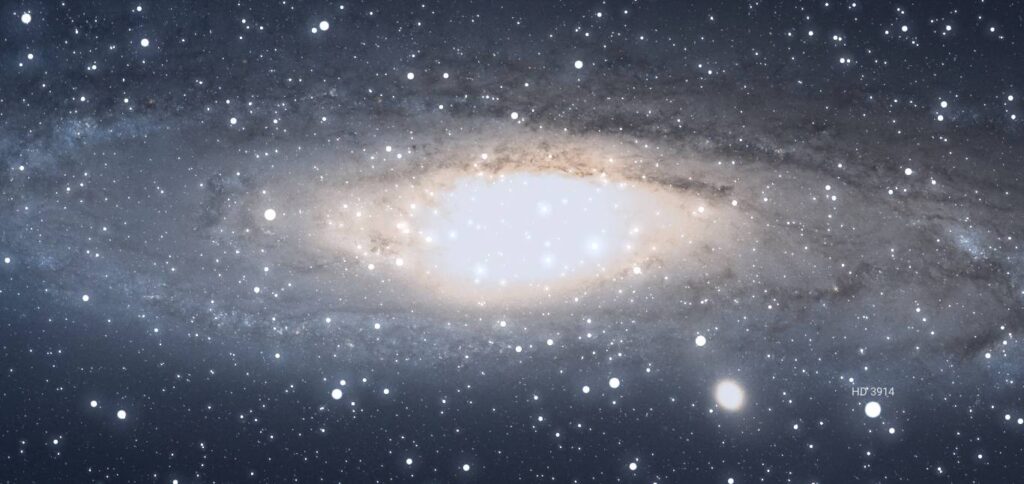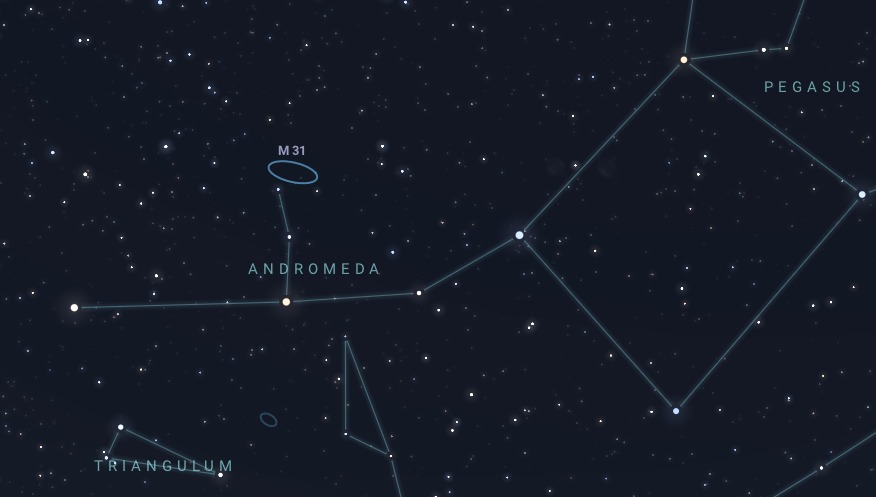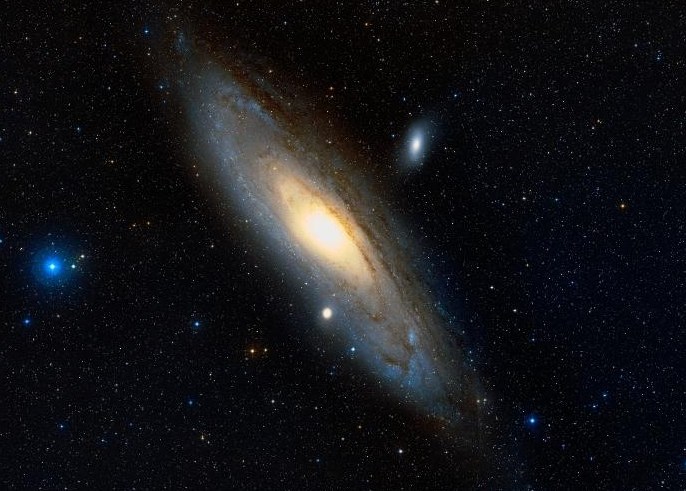The Andromeda Galaxy, also known as M31, is the closest spiral galaxy to the Milky Way, and one of the most popular targets for observation and exploration by astronomers. Here are some key details about M31:
Location
M31 is located in the constellation of Andromeda, and is approximately 2.5 million light-years away from Earth, making it the nearest spiral galaxy to the Milky Way. Andromeda is part of the Local Group of galaxies, which also includes the Milky Way, the Triangulum Galaxy (M33), and numerous smaller galaxies. It is visible to the naked eye under dark skies and is best observed from the northern hemisphere.
Size and Structure
M31 is a barred spiral galaxy, meaning it has a central bar-shaped structure composed of stars and dust. Spiral arms extend outward from the bar, giving the galaxy its characteristic spiral shape. The nucleus of the galaxy contains older stars, while the spiral arms consist of younger, hot blue stars. Gas and dust clouds in the spiral regions provide material for star formation, and Andromeda’s dark matter halo significantly influences its overall mass and gravitational structure.
The galaxy is enormous, with a diameter of about 220,000 light-years, making it larger than the Milky Way. It contains around one trillion stars, compared to the estimated 100-400 billion stars in the Milky Way.

Black Hole
At the core of the Andromeda Galaxy (like many large galaxies) lies a supermassive black hole. This black hole has an estimated mass of about 100 million times that of our Sun. Its presence is inferred through the motion of stars and gas near the center of the galaxy, which orbit at high speeds due to the intense gravitational pull of this massive object. Despite its size, it doesn’t “suck in” everything around it—only material that comes very close to it will spiral in and get consumed.
Neighbouring Galaxies
M31 has numerous satellite galaxies orbiting around it. Some of the most prominent ones include M32 and M110, which are elliptical galaxies, as well as several dwarf galaxies.
Andromeda is on a collision course with the Milky Way, and the two galaxies are expected to collide in about 4 to 5 billion years, merging to form a single, larger galaxy dubbed “Milkomeda” or “Milkdromeda.”
Observation:
The Andromeda Galaxy is a popular target for amateur and professional astronomers alike. It can be observed with the naked eye as a faint, elongated patch of light under dark skies. With large binoculars or telescopes, its spiral structure and brighter regions can be discerned, offering a fascinating view of a distant galaxy similar to our own.
M31 is best observed from late summer through autumn (September to November) in the northern hemisphere. During these months, the constellation of Andromeda, where M31 is located, is well-placed in the night sky and can be easily spotted.




